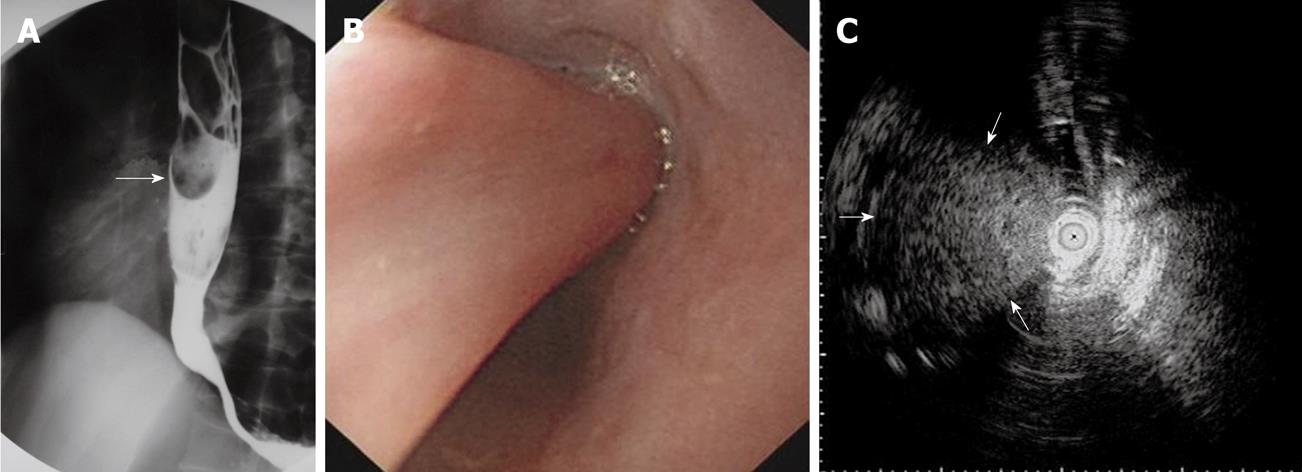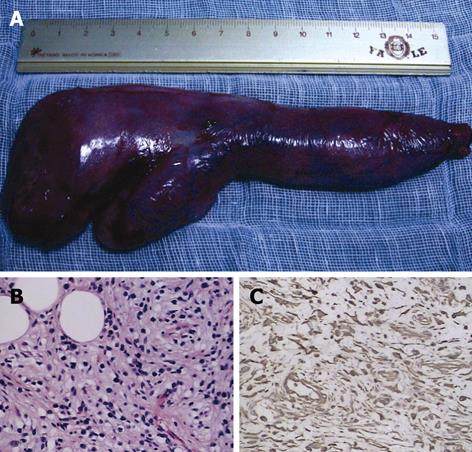Copyright
©2009 The WJG Press and Baishideng.
World J Gastroenterol. Nov 7, 2009; 15(41): 5236-5238
Published online Nov 7, 2009. doi: 10.3748/wjg.15.5236
Published online Nov 7, 2009. doi: 10.3748/wjg.15.5236
Figure 1 Imaging of esophageal polyp.
A: Barium swallow showed a giant esophageal polyp (arrow), which was free from the middle and lower esophageal wall; B: Gastroscopy showed the polyp with smooth overlying mucosa (at 18 cm from the incisors); C: EUS revealed well-distributed, low-echo-level lesions at root of the polyp (white arrows), excluding echoless lumen-like structures.
Figure 2 Esophageal polyp removal.
A: Residual polyp (white arrow) after polypectomy at the left wall of the esophagus (18 cm from incisor). A nasogastric tube (black arrow) used for suction (size 16 Fr) was placed over the right wall of the esophagus; B: Hemoclips (white arrow) were applied to the residual polyp; C: After application of the hemoclips (black arrow) to the residual polyp (white arrow).
Figure 3 Polypectomy specimen and its pathology.
A: The resected esophageal lesion measured 17 cm in length, and the neck, body and tail of the lesion measured 1, 3 and 5 cm, respectively; B: HE staining (original magnification, × 200) showed the presence of lots of fibroblasts, with some acidophilic cells, plasma cells and adipose cells; C: Immunostaining (original magnification, × 200) for vimentin showed strong staining of the cells.
- Citation: Zhang J, Hao JY, Li SWH, Zhang ST. Successful endoscopic removal of a giant upper esophageal inflammatory fibrous polyp. World J Gastroenterol 2009; 15(41): 5236-5238
- URL: https://www.wjgnet.com/1007-9327/full/v15/i41/5236.htm
- DOI: https://dx.doi.org/10.3748/wjg.15.5236











